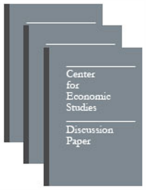What Caused Racial Disparities in Particulate Exposure to Fall? New Evidence from the Clean Air Act and Satellite-Based Measures of Air Quality
What Caused Racial Disparities in Particulate Exposure to Fall? New Evidence from the Clean Air Act and Satellite-Based Measures of Air Quality
Abstract
Racial differences in exposure to ambient air pollution have declined significantly in the United States over the past 20 years. This project links restricted-access Census Bureau microdata to newly available, spatially continuous high resolution measures of ambient particulate pollution (PM2.5) to examine the underlying causes and consequences of differences in black-white pollution exposures. We begin by decomposing differences in pollution exposure into components explained by observable population characteristics (e.g., income) versus those that remain unexplained. We then use quantile regression methods to show that a significant portion of the “unexplained” convergence in black-white pollution exposure can be attributed to differential impacts of the Clean Air Act (CAA) in non-Hispanic African American and non-Hispanic white communities. Areas with larger black populations saw greater CAA-related declines in PM2.5 exposure. We show that the CAA has been the single largest contributor to racial convergence in PM2.5 pollution exposure in the U.S. since 2000 accounting for over 60 percent of the reduction.
Others in Series
Working Paper
Working Paper
Working Paper




